 Williamsburg is a magical place to spend the holiday season. The town is awash in tradition, but not all of it is strictly 18th-century. Here are five ways that a colonial Christmas season was really different from our modern festivities.
Williamsburg is a magical place to spend the holiday season. The town is awash in tradition, but not all of it is strictly 18th-century. Here are five ways that a colonial Christmas season was really different from our modern festivities.
How? Glad you asked.
#1 Decking the Halls—But Not the Doors

Williamsburg’s famous seasonal decorations use natural materials that were available in the colonial era, but they are meant to represent familiar things of that period, rather than the way residents actually decorated.
The decorating owes as much to enthusiasm for Colonial Revival style as the colonial period itself. Colonial Williamsburg’s first Christmas decorations in 1936 were understated: simple wreaths and some running cedar at the Governor’s Palace and Raleigh Tavern.
But by 1940, inspired by some research at the Library of Congress into period decorations, “della Robbia” wreaths, featuring fruit, flowers, and other bits of nature, were becoming a fixture of a Colonial Williamsburg Christmas.
The authenticity comes from the use of native vegetation and available fruits such as apples, not to mention clever references to Historic Trades and the building’s individual histories. But in the 1700s, residents would not have left their pineapples, lemons, or nuts vulnerable to the town’s squirrels.
And forget about Christmas trees. The first one known in Williamsburg wasn’t until 1842, when Charles Minnigerode, a German immigrant and College of William & Mary professor, put one up at the St. George Tucker House.
#2 The Reason for the Season
Bruton Parish Church, celebrating its 300th anniversary this year, has several evening services on Christmas Eve. In the 1700s it was too dark and cold to be having services at that time of day. One service would be celebrated at the usual late morning time, and it was one of only four times a year when communicants in the Church of England were given Holy Communion.
The “sticking of the church” introduced some greenery: evergreens, holly, ivy, and mistletoe. These were traditional decorations in England, but they were probably used sparingly at Bruton. Few other clues would have indicated it was Christmas. Certainly there was no manger scene.
And if you “saw three ships come sailing in, come sailing in,” you were free to sing about it at home but not at church. Same with “Joy to the World,” sung to a different tune from the one we use today, which was not composed until the early 19th century. In the 18th century, only psalms, directly derived from the Bible and recast in metrical verse, were considered appropriate for singing in the Church of England, as well as other Protestant churches.
Christmas carols, often derived from popular ring dances, were barred because they were considered secular. Even hymns inspired by sacred texts didn’t make it into church services in Virginia until the 19th century.
The colony’s religious dissenters, including Baptists, Presbyterians, and Quakers, didn’t even observe Christmas. Philip Vickers Fithian, who spent Dec. 25, 1775 among the Scots-Irish in western Virginia, wrote, “To Day is like every other Day every Way calme & temperate.”
#3 A Christmastide Lifts All Spirits
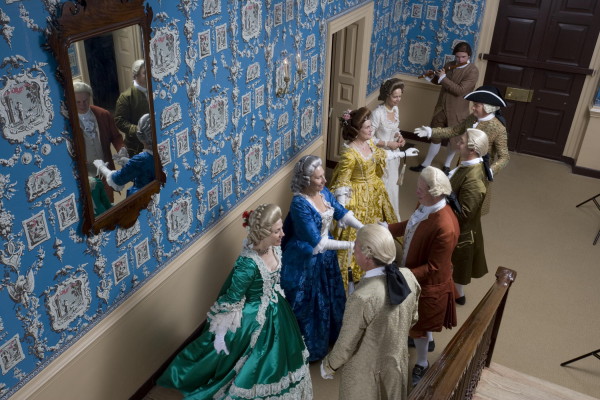
We tend to have our parties before Christmas, not afterwards, but back then the fun was just beginning on Dec. 25. Boys fired guns on Christmas Eve and morning, a custom called “shooting in the Christmas.”
Virginians celebrated the 12 days of Christmas (yep, those 12 days) as Christmastide. It lasted until Jan. 6, the Feast of Epiphany, marking the day the three Wise Men arrived in Bethlehem to present Jesus with gifts of gold, frankincense, and myrrh. And it’s the evening before Twelfth Night when colonial Virginians really took to partying.
There were balls, fox hunts, and entertainments all over town to stave off the darkness and cold of winter. It culminated with what Virginians called “Old Christmas,” when friends and relatives would come for festive balls and suppers.
Not everyone was a fan of the fun. In 1758, Presbyterian minister Samuel Davies condemned the 12 days of Christmas as a season of “sinning, sexuality, luxury, and various forms of extravagance; as though men were not celebrating the birth of the holy Jesus, but of Venus, or Bacchus, whose most sacred rites were mysteries of iniquity and debauchery.”
So there’s your proof that concerns about the commercialization of Christmas significantly predate the rise of the department store Santa.
#4 Re: Secret Father Christmas and Ye Olde Hallmark
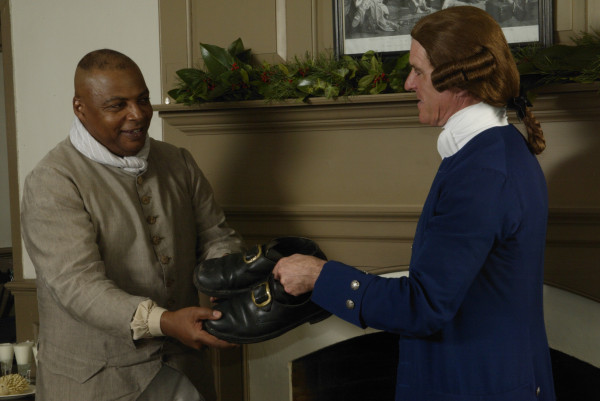
Two staples of modern Christmas—exchanging cards and gifts—were only a tangential part of the colonial Christmas season. Letter writers would typically offer a seasonal greeting, but Christmas cards per se came along much later.
Santa Claus, St. Nicholas, and even the English Father Christmas were nowhere to be found in 18th-century Williamsburg. Gift giving was often more about small kindnesses extended to one’s social “inferiors” than to grand gestures. Reciprocal exchanges were less common, although food might be sent to friends. Children, for example, might receive a toy or an instructional book. Presents were as likely to be given at New Year’s as on Christmas day.
Servants and apprentices often received an extra bit of money for their work during the year. In England these gifts had typically been collected in “Christmas boxes,” a tradition that was replicated—minus the actual box—in the American colonies.
Servants and even enslaved persons sometimes received small gifts of money or alcohol-often from their masters. In 1773, Fithian recorded his own contribution:
Nelson the boy who makes my Fire, blacks my shoes, does errands &c. was early in my Room, and drest only in shirt and Breeches! He made me a vast fire, blacked my shoes, set my Room in order, and wish’d me a joyful Christmas, for which I gave him half a Bit…Soon after my Cloths and Linen were sent in with a message for a Christmas Box, as they call it; I sent the poor slave a Bit, & many thanks.
But one of the best gifts a slave could receive was time to visit family. This was the time of year when those hired out to work in cities sometimes received permission to visit their home plantations. Others traveled dozens of miles or more to visit family from whom they were separated.
#5 Getting Hitched
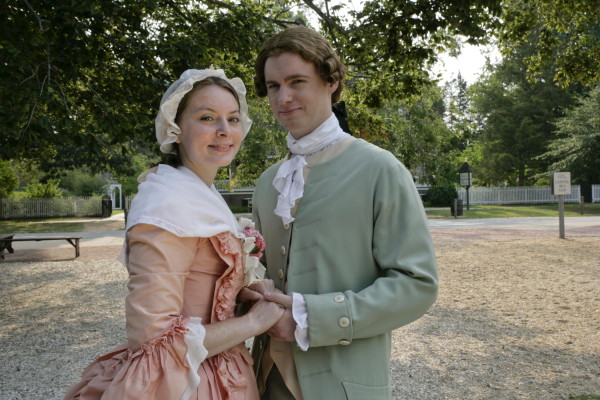
Finally, there’s a little bit of a connection between Christmas and marriage. June brides are made during the Christmas season. Close to 20 per cent of American couples reportedly get engaged from December through New Year’s.
But in the 18th century, the beginning of January was a very popular time to get married. Usually the ceremony was performed at home, not in the church. Thomas Jefferson married Martha Wayles Skelton on Jan. 2, for example, and George Washington married Martha Custis on Jan. 6.
Every generation finds its own way to incorporate tradition and history into this magical season. What are your favorites?
We’d like to extend a special thank you to Marvin Barnes for the wreath images at the top of this post!
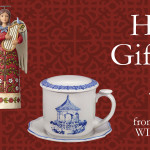

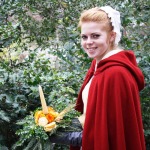
Is that Thomas Jefferson and Martha Skelton in photo #5?
No, I’m afraid not. It’s a picture of two 18th-century interpreters photographed some time ago for a story about weddings, so it’s meant to illustrate a happy couple. I don’t know whether they were supposed to represent specific people, but in any case I don’t believe they represented Tom and Martha (or George and Martha, for that matter). Thanks for reading, and for thinking to ask about that!
I enjoyed reading this posting although there seems to have been more colonial folks - even of a religious nature - celebrating Christmas than originally thought.
I wrote a blog post about celebrating a colonial Christmas as well using twelve different sources as my references:
http://passionforthepast.blogspot.com/2014/12/a-colonial-christmas-with-brief-history.html
That’s interesting about the farmers getting married in the winter! I guess it makes sense. Also surprised Christmas trees and wreaths are a relatively recent idea!!
My In-Laws were married on Dec. 26th 1935. They both came from farm families. And from what I understand, being a city kid myself, late December, early January was the best time for weddings in a farming community. There were no fields to plant or tend. And being short a hand in the field at this time of year was not inconvenient. The happy couple could go away for a few days. If the farm had animals that needed tending, someone would stay behind or a neighbor would help out if the farmer needed travel for the celebration .